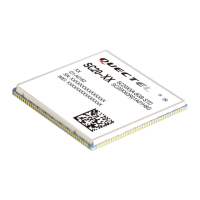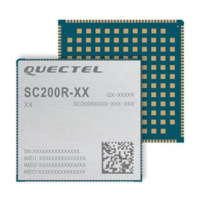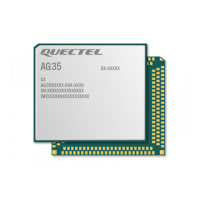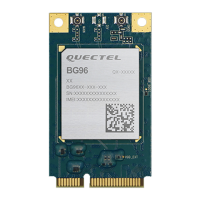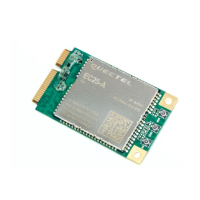Smart Module Series
SC206E_Series_Hardware_Design 43 / 115
If the thermistor is not available in the battery, or an adapter is utilized to power the module, you must
connect BAT_THERM to GND via a 47 kΩ resistor. Otherwise, the system may mistakenly judge that the
battery temperature is abnormal, and therefore cause battery charging failure.
BAT_P and BAT_M must be connected. Otherwise, exceptions in voltage detection will be caused, with
associated problems of turn-on/off and battery charging/discharging.
3.9. USB Interface (Type-C)
The module provides one USB interface which complies with both USB 3.1 and USB 2.0 specifications
and supports superspeed (5 Gbps) and high-speed (480 Mbps), and full-speed (12 Mbps) modes. The
USB interface supports USB OTG and is used for AT command transmission, data transmission,
software debugging and firmware upgrade.
The module only supports USB Type-C. The USB interface has one USB 2.0 compliant high-speed
differential channel (USB_DP, USB_DM) and one USB 3.1 compliant superspeed differential channel
(USB_SS1_RX_P/M, USB_SS1_TX_P/M and USB_SS2_RX_P/M, USB_SS2_TX_P/M).
When Type-C is plugged in with one side up, the external device is detected by USB_CC1, and the data
will be transmitted through USB_SS1; when it is plugged in with the other side up, the external device is
detected by USB_CC2, and the data will be transmitted through USB_SS2. The following table shows
the pin definition of USB interface.
Table 10: Pin Definition of USB Interface
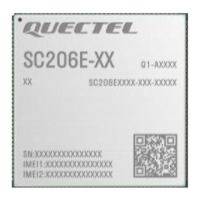
